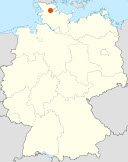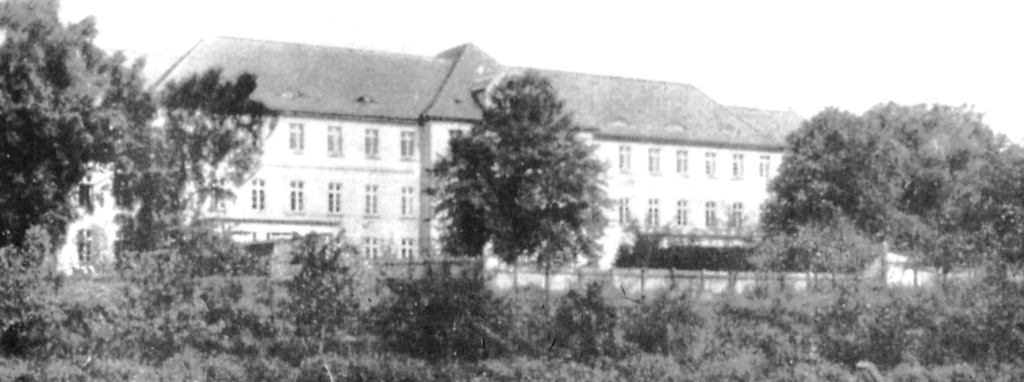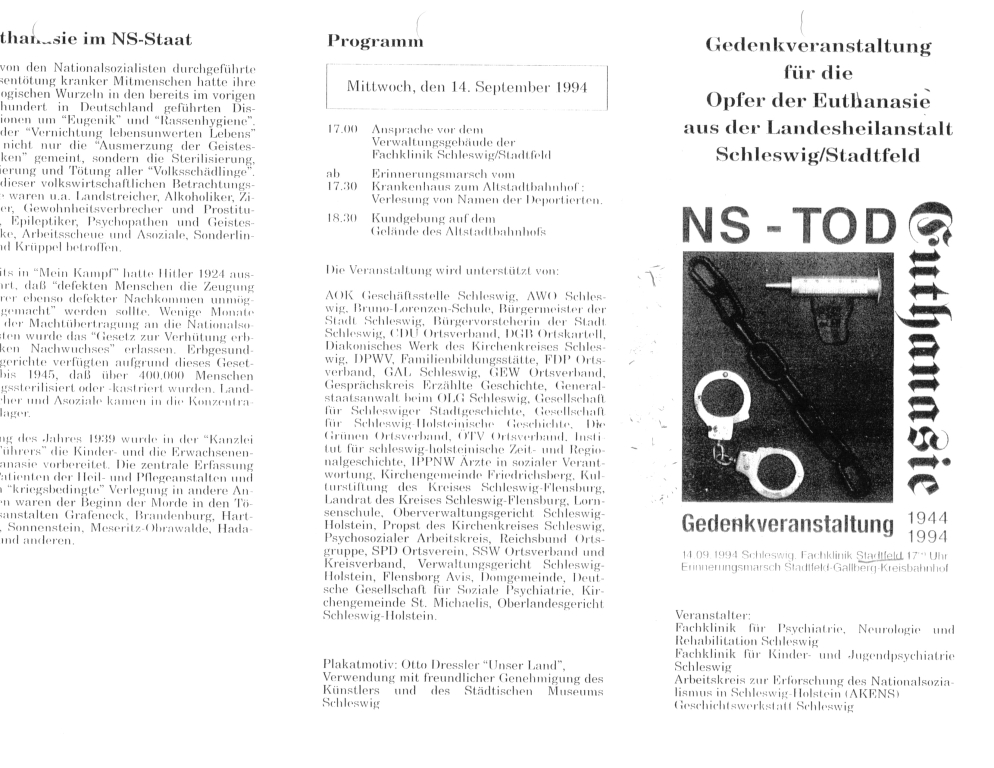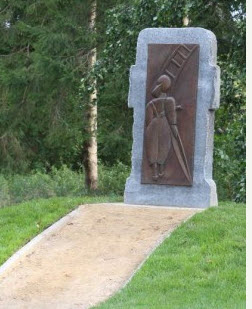Home
Schleswig-Stadtfeld (Landes-, Heil- und Pflegeanstalt
Schleswig-Stadtfeld)

The Kinderfachabteilung in Schleswig-Hesterberg
was transferred to the the Landes-, Heil- und Pflegeanstalt
Schleswig-Stadtfeld on 3 February 1942. The director of the institution was
Dr. Carl Grabow. Responsible for the special children's ward at first
remained the physician Dr. Erna Pauselius, who had been responsible for it
at the Hesterberg, until she left in April 1942 after conflicts between her
and the director. Dr. Johannes Krey assumed responsibility until September
1941, possibly jointly between with Dr. Hans Burkhardt until end of 1942,
who was responsible after that. Carl Grabow remained medical director of the
clinic until 1951 and died in 1965. Dr. Burkhardt remained a physician at
the psychiatric clinic in Schleswig-Stadtfeld until 1969 and even sued the
historian Klaus Bästlein to prevent his name being mentioned in his article
(he lost). For the investigations against them, and the resulting beginnings
of inquiries about children's euthanasia crimes and commemoration, see
Schleswig-Hesterberg.
 Source: Der Hesterberg, p.
105
Source: Der Hesterberg, p.
105
A total of 216 children and youths up to 16 years of age are confirmed to
have died at the Hesterberg and Stadtfeld facilities between September 1939
and May 1945. For almost all of them, their medical records are extant. Even
though S. Misgajski, in Der Hesterberg
(pp. 50, 53), notes that the special children's ward was not physically
separated, it is reported (pp. 105, 148) that it was located in the building
pictured above (the Männernebenhaus - see also
here) at the end of 1942.

In 1994, a commemorative event took place on occasion of the 50th
anniversary of the transfer of 697 adult patients from Schleswig-Stadtfeld
to Meseritz-Obrawalde, of whom only 65 were still alive when the Red Army
arrived in 1945.
In 1995, on occasion of the 175th anniversary of the clinic at Stadtfeld a
chronicle was published by Harald Jenner, which includes a section on
"children's euthanasia."
 Source:
http://www.shz.de/img/schleswiger-nachrichten/crop3674276/521326243-cv3_4-h335/23-55182146-23-55182148-1379370790.jpg
Source:
http://www.shz.de/img/schleswiger-nachrichten/crop3674276/521326243-cv3_4-h335/23-55182146-23-55182148-1379370790.jpg
In 2009, there was a memorial service for the murdered patients who had been
transported to Meseritz-Obrawalde on the anniversary of the transport. Then
in a local high school a design contest held for an art memorial. Its
designation took place in September 2013. The memorial was designed by the
artist Jutta Reichelt. It depicts a disabled woman with her wooden shoes on
her way toward the tracks of a train, symbolizing the local station and the
way in which a train from there takes her to the killing facility. The
picture is framed like a grave stone. While it addresses patients
transported away from the facility and (for many) toward their death, no
mention is made of the children who were transported to
Schleswig-Stadtfeld specifically for the purpose of selection and murder.
Both the Schleswig-Hesterfeld and the Schleswig-Stadtfeld facilities were
part of the SCHLEI-Klinikum Schleswig owned by the DAMP group before
becoming part of the HELIOS group under the same name. The company's website does not refer to history of the facilities.
Literature
Bästlein, Klaus. 1991a. 'Die "Kinderfachabteilung'
Schleswig 1941 bis 1945." Informationen
zur Schleswig-Holsteinischen Zeitgeschichte 20:16-45.
———. 1991b. "Die 'Kinderfachabteilung' Schleswig 1941
bis 1945." Schleswig-Holsteinisches
Ärzteblatt 63:18-34.
Benzenhöfer, Udo. 2003. "Genese
und
Struktur der 'NS-Kinder- und Jugendlicheneuthanasie.'" Monatsschrift
für Kinderheilkunde 151: 1012-1019.
Bergen, Hendrike van, Alfred Ebeling, and Christian
Radtke. 1998. "Der Gesprächskreis Erzählte Geschichte in Schleswig:
Erfahrungen und Ergebnisse aus der Arbeit einer lokalen
Geschichtswerkstatt." Informationen zur
Schleswig-Holsteinischen Zeitgeschichte 33/34: 219-26. Available
at http://www.akens.org/akens/texte/info/33/333417.html.
Godau-Schüttke, Klaus-Detlef. 2010. Die
Heyde/Sawade-Affäre: Wie Juristen und Mediziner den
NS-Euthanasieprofessor Heyde nach 1945 deckten und straflos blieben.
Baden-Baden: Nomos (esp. pp. 103-8).
Heesch, Eckhard. 2004. "Marylene: Ein behindertes Kind
im 'Dritten Reich'." Informationen zur
Schleswig-Holsteinischen Zeitgeschichte 43 (April): 24-63.
Illiger, Horst. 2004. "Sprich
nicht drüber!": Der Leidensweg von Fritz Niemand. Neumünster:
Paranus.
Jenner, Harald. 1995. Die
Geschichte einer Psychiatrischen Klinik: Schleswig-Stadtfeld.
Schleswig: Fachklinik für Psychiatrie, Neurologie und Rehabilitation
Schleswig.
Landesarchiv Schleswig-Holstein, ed. 1997. Der
Hesterberg: 125 Jahre Kinder- und Jugendpsychiatrie und Heilpädagogik in
Schleswig: Eine Ausstellung zum Jubiläum der Klinik für Kinder- und
Jugendpsychiatrie und Psychotherapie sowie des Heilpädagogikums in
Schleswig. Schleswig: Selbstverlag des Landesarchivs
Schleswig-Holstein.
Misgajski, Susanna. 2006. "Der Hesterberg." Pp. 68-77
in Schleswig-Holsteinische
Erinnerungsorte, edited by C. Fleischhauer and G. Turkowski.
Heide: Boyes Buchverlag.
Puvogel, Ulrike, and Martin Stankowski. 1996. Gedenkstätten
für die Opfer des Nationalsozialismus, vol. 1. 2d ed. Bonn:
Bundeszentrale für politische Bildung. Available at http://www.bpb.de/files/5JOYKJ.pdf.
Schwarz, Rolf. 1986. "Ausgrenzung und Vernichtung
kranker und schwacher Schleswig-Holsteiner: Fragen zu einem unbearbeiteten
Problem der Geschichte unseres Landes von 1939-1945." Demokratische
Geschichte 1: 317-38.
Topp,
Sascha.
2004. “Der ‘Reichsausschuss zur wissenschaftlichen Erfassung erb- und
anlagebedingter schwerer Leiden’: Zur Organisation der Ermordung
minderjähriger Kranker im Nationalsozialismus 1939-1945.” Pp. 17-54 in Kinder
in der NS-Psychiatrie, edited by Thomas Beddies and Kristina Hübener.
Berlin-Brandenburg: Be.bra Wissenschaft.
———. 2005. "Der 'Reichsausschuß zur wissenschaftlichen
Erfassung erb- und anlagebedingter schwerer Leiden': Die Ermordung
minderjähriger Kranker im Nationalsozialismus 1939-1945." Master's Thesis
in History, University of Berlin.
Last updated on 14
Feb. 2015

 Source: Der Hesterberg, p.
105
Source: Der Hesterberg, p.
105
 Source:
http://www.shz.de/img/schleswiger-nachrichten/crop3674276/521326243-cv3_4-h335/23-55182146-23-55182148-1379370790.jpg
Source:
http://www.shz.de/img/schleswiger-nachrichten/crop3674276/521326243-cv3_4-h335/23-55182146-23-55182148-1379370790.jpg